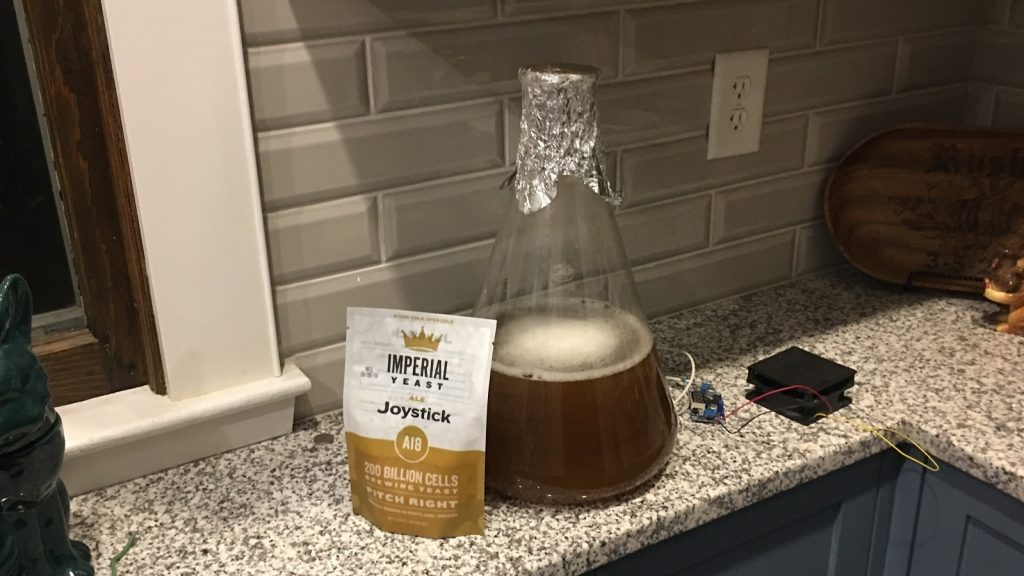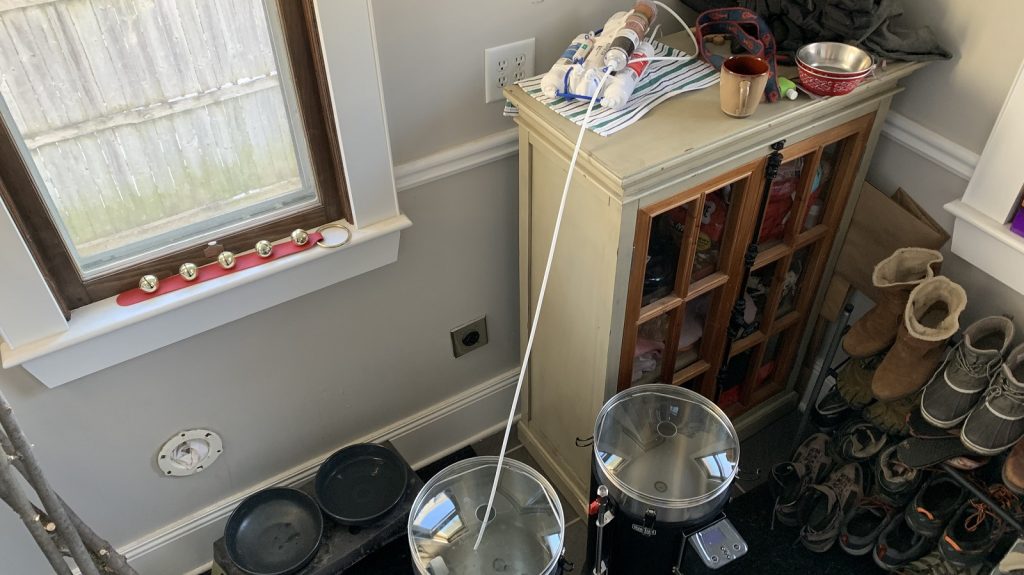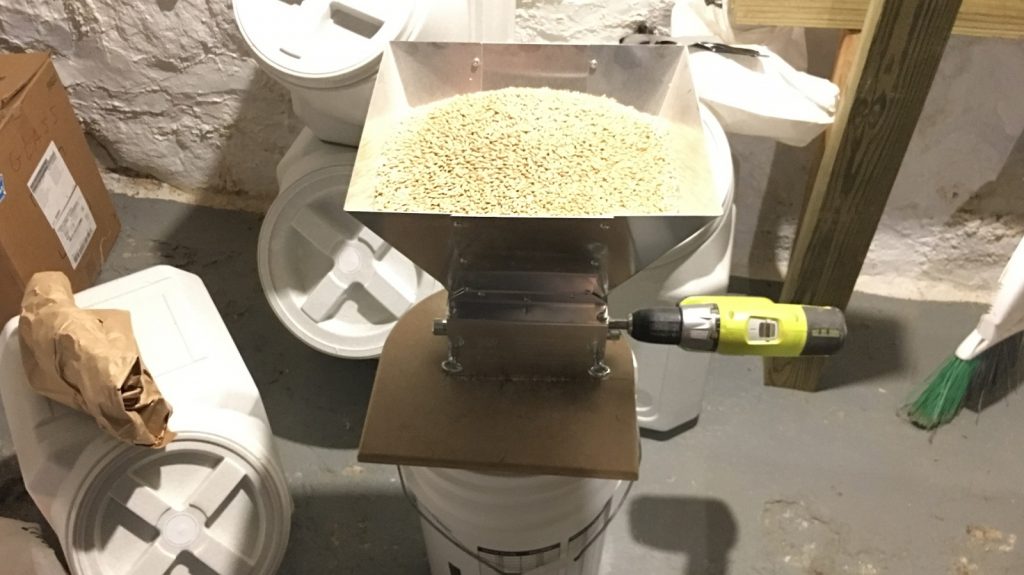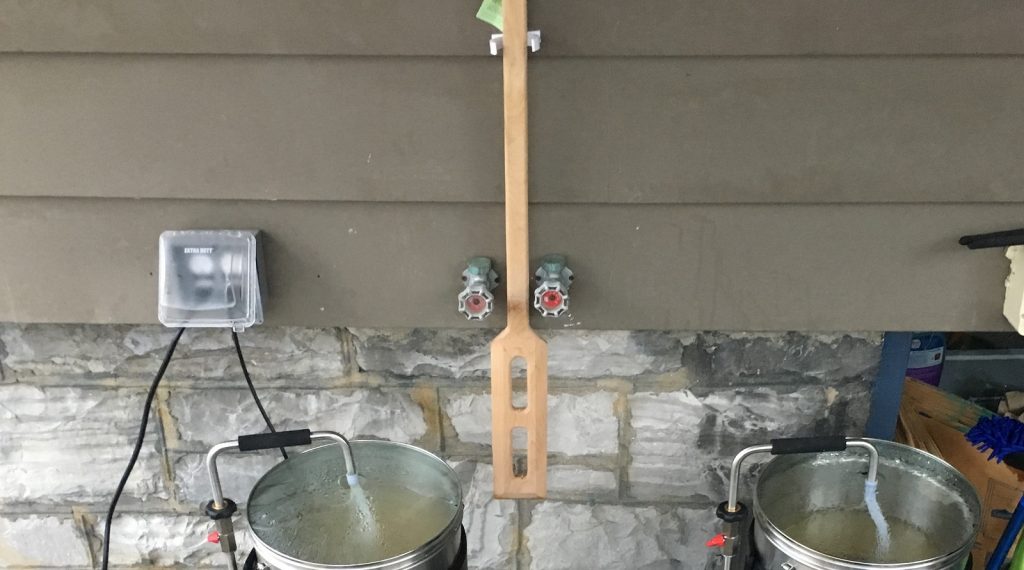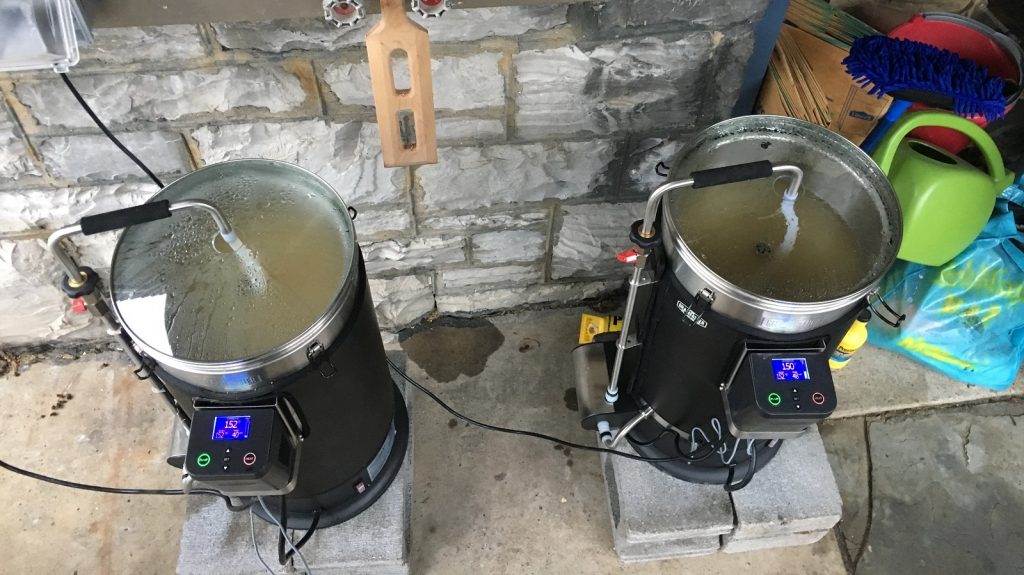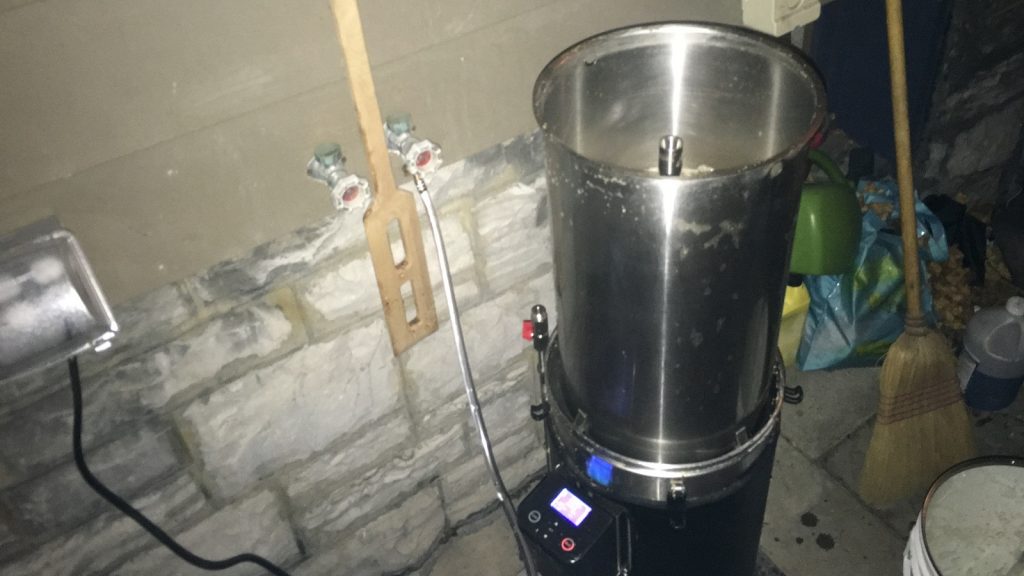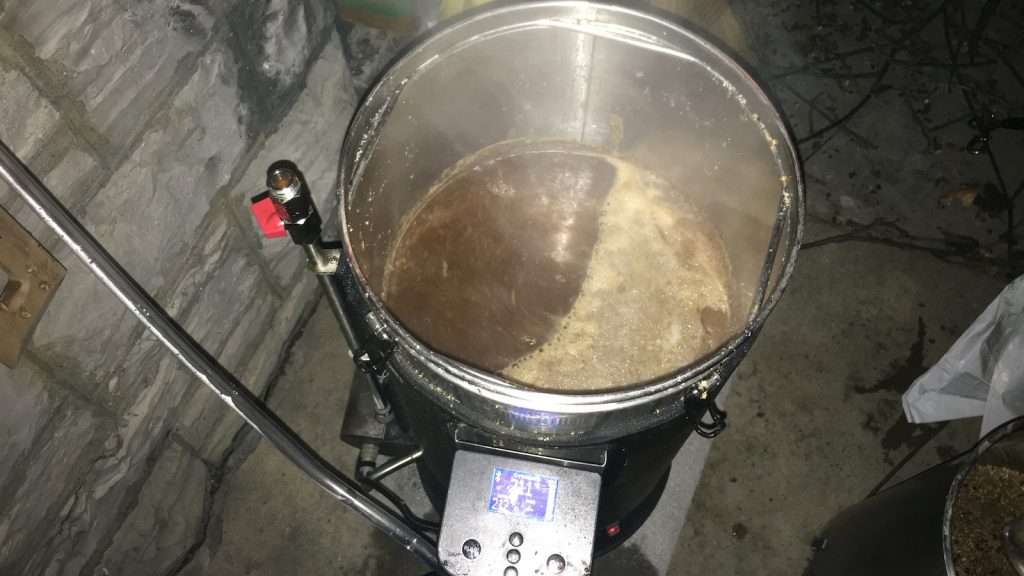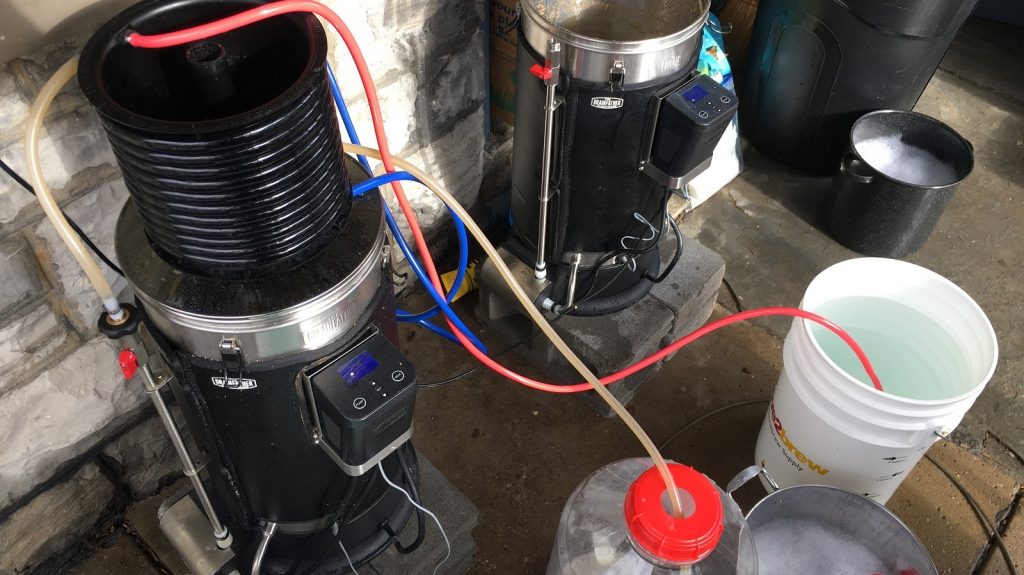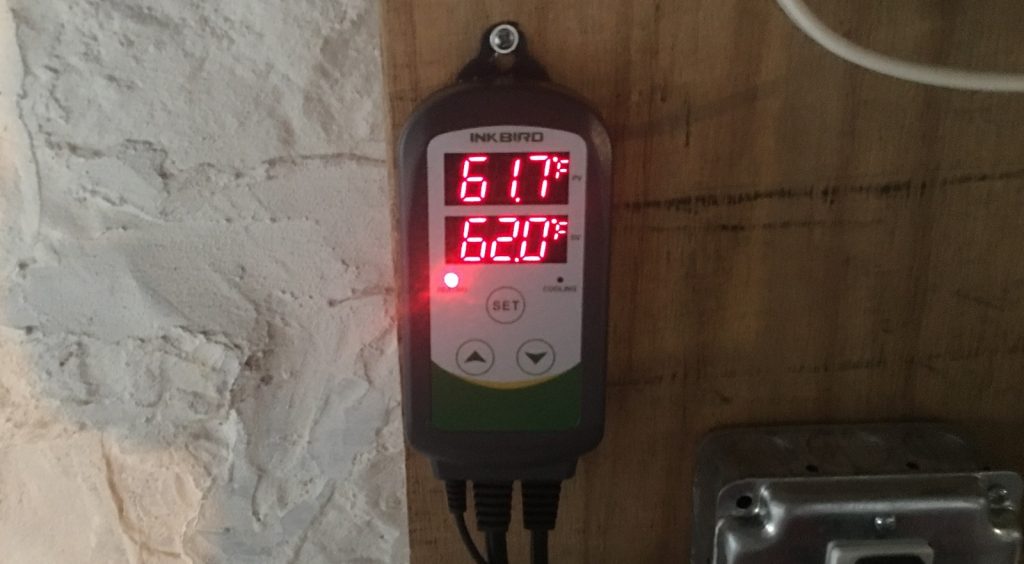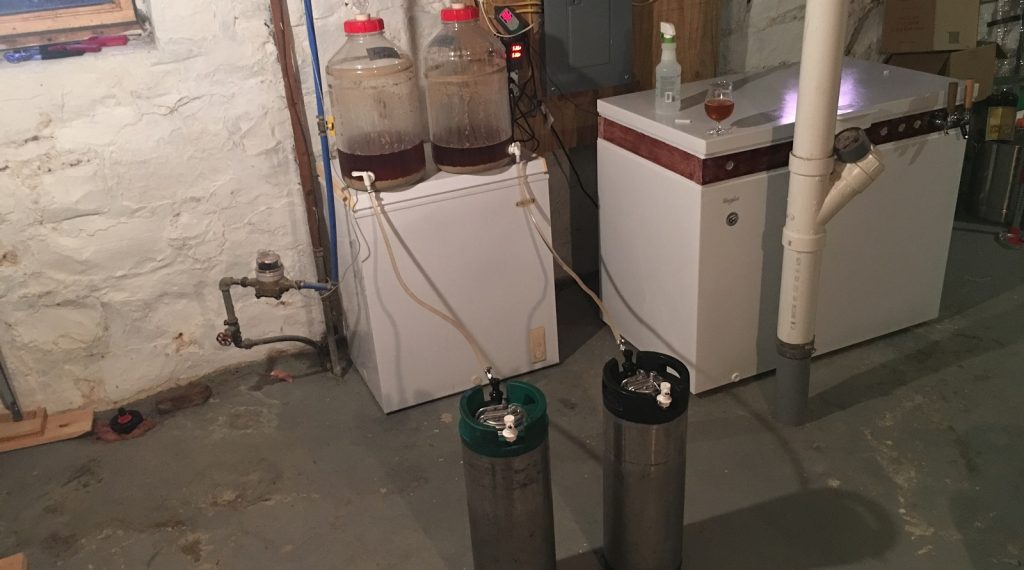 Phil was born and raised on the coast of New Jersey before making his way to central New York, where he currently resides with his family. Having studied cell biology and neuroscience in college, Phil enjoys the more experimental side of brewing and beer, making him a natural fit for Brülosophy. Currently working as a Graduate Field Coordinator at a local university, Phil is also taking classes in sensory evaluation and food chemistry. His second favorite Beatle is George.
Phil was born and raised on the coast of New Jersey before making his way to central New York, where he currently resides with his family. Having studied cell biology and neuroscience in college, Phil enjoys the more experimental side of brewing and beer, making him a natural fit for Brülosophy. Currently working as a Graduate Field Coordinator at a local university, Phil is also taking classes in sensory evaluation and food chemistry. His second favorite Beatle is George.
| ABOUT PHIL|
How did you get into brewing?
I developed a deep appreciation for the good stuff the moment I had my first craft beer, and during the years from post-high school to my early 20’s, my friends and I often found ourselves fantasizing about making it on our own, which never happened. In the 10 or so years that followed, I sampled numerous tasty craft beers balanced by a healthy dose of BMC. Then, in 2015, after somehow hearing how awesome I thought it’d be to recreate some of the beers I was drinking at home, my girlfriend bought me a 1 gallon brewing kit as a gift. I was immediately hooked, jumping in headfirst after just two batches. And that girlfriend is now my wife.
What was your first batch and how did it turn out?
Everyday IPA from Brooklyn Brew Shop. Of course, at the time it tasted amazing. However, I’m fairly certain I was just marveling at the fact I had in fact made beer. Whether or not that was in reality a good beer is unclear. My friends and family who drank it also enjoyed it, so I guess that counts for something?
How did you get involved with Brülosophy?
The short answer: I weaseled my way into it. Like a weasel.
The slightly longer answer: I reached out to Marshall way back in January 2016 with an offer to help collect xBmt data. He ignored me for a couple years, then after I moved to New York, I emailed him again with some ideas and we got to talking. After realizing we shared a similar penchant for good beer, critical thinking, and shenanigans, the idea of me coming on as a regular contributor came up. After a few months of back-and-forth, I was invited to join the crew in late summer 2018.
What xBmt has surprised you the most?
Seeing so many xBmts where tasters could distinguish between beers fermented in different types of fermentation vessels was really interesting. I never would have expected those results!
Have the xBmts influenced your current brewing perspectives?
Yes and no. The xBmt results have been thought provoking and a great source of inspiration, but as a skeptic by nature and training, I’ve learned to take most everything with large grains of salt. So to that end, I tend to question the standard brewing advice just as much I do the results of our xBmts. And in the end, I often go with my gut on most things.
What are your 3 favorite styles of beer?
This is a difficult one for me because my favorites are so fluid!
American Stout
One of my go-to beers. Bold roast flavors with supportive bitterness and a solid hop character– American Stout checks all of my major boxes, even when its a bit boozy. For those warmer weather days when I find myself thirsty and wanting for something that’s not pale, I make a 3% ABV version of my American Stout that hits the spot quite nicely.
Saison
Spicy, light, dry, sometimes slightly tart, sometimes amber. Everything about this style appeals to me, and its highly variable interpretations make it all the more enticing.
German Pils
Maybe it’s the fact that mass marketing of beer has made Pilsner the most ubiquitous of all beer styles, or maybe I like the idea of paying homage to my German/Austrian ancestry. At any rate, I love basically all German beer styles, and German Pils is in a place that’s very near and dear to my wee little black heart.
What are your favorite ingredients?
Malt: Vienna Malt
I love the rich, bready, malty sweetness that is imparted by Vienna without adding too much color. I often use it as a base malt in place of pale malt or Pilsner for these characteristics.
Hops: German Magnum
If I ever ran a production brewhouse this would be my first choice for a house bittering hop. High alpha acids and clean flavor profile make it ideal for almost any beer style.
Yeast: Imperial Yeast A10 Darkness
If I had to pick just one favorite, it’d have to be A10 Darkness from Imperial Yeast. I’ve used this strain many times over the years for a variety of styles and I’ve always loved the resultant beers. It’s a monster attenuator that’s ideal for the big dark beers I like to make, though it works well in paler styles as well.
What’s your desert island beer?
If desert island beer means one beer for the rest of my life, I’d say Firestone Lager, which is one of my favorite lagers in production right now. Crisp, light, refreshing, and delicious, I can drink the shit out of it.
What music do you listen to while brewing?
This is highly variable and dependent on various things, but lately I’ve been listening to a lot of Snarky Puppy. A few others that get heavy brew day rotation are Dan Auerbach, Punch Brothers, Queens of the Stone Age, and Esperanza Spalding.
What else do you enjoy doing besides brewing?
I’m nowhere near as in shape as I used to be, but trail running and obstacle course racing (OCR) is where I spent a large chunk of my time in years past. These days, my trail running is limited, replaced largely by hikes with my wife and dogs. I do some really novice level woodwork from time to time as well.
If you could go back, what brewing advice would you give yourself?
Get a good water filter! Back in the day, I’d spend hours collecting brewing water using only a Brita filter. It was not fun.
| BREWING GEAR & PROCESS |
I recently made the switch to using a dual Grainfather setup, which has made side-by-side xBmt batches possible. Prior to that, I used a standard BIAB method with a keggle and propane.
Pre-Brew Preparation
I use BeerSmith for recipe design then import that information into the Grainfather calculator.
For higher ABV beers where I’m not direct pitching yeast, I’ll propagate with a starter in a 5 liter Erlenmeyer flask a couple days ahead of time.
Depending on the style of beer I’m brewing, I’ll use either straight RO water, filtered tap water, or a combination of both. I usually collect my water the day before brewing and determine the adjustments needed to achieve my desire profile with the Bru’n Water Spreadsheet.
With my water ready, I weigh out and mill the grain with my Kegco 3-roller mill in preparation for brew day.
Brewing
My brew days start with me turning the Grainfather heating elements on to heat the water, then once strike temperature is reached, I add the grist and thoroughly mix it with my mash paddle.
When the grain is fully incorporated, I put the lid in place, turn the recirculation pump on, and let the Grainfather do its thing for however long I’m mashing for.
During the mash step, I shift my focus to heating the sparge water, which I do in a 5 gallon pot on my stove top. After the mash is complete, I lift the inner basket out, set the controller to boil mode, then sparge while the wort is heating up. If I’m making a first wort hop addition, this is when it gets added.
As soon as a boil is reached, I start my timers and make kettle hop additions as necessary.
I start running boiling wort through the counter flow chiller (CFC) to sanitize it during the last 10-15 minutes. Once the boil is finished, I kill the heat and get cold tap water flowing through the CFC, which quickly chills the wort during transfer.
I’ve been using FerMonster plastic fermentation vessels with spigots lately and really like them. Once full, the fermentor gets placed in my fermentation chamber where the temperature is regulated by an InkBird ITC-308 controller.
Packaging & Serving
With very rare exception, I keg the beers I brew using a piece of tubing attached to a liquid ball lock disconnect.
While I often use the burst carbonation method, I occasionally go the low-and-slow route if I’m not in a rush. My beer is served out of my ### tap keezer through either Intertap or standard chrome faucets (planning on upgrading all to Intertap shortly).
Cleaning & Sanitation
Immediately after transferring wort out of the Grainfather, I give it a good rinse with hot tap water and remove the pump filter/inlet for cleaning. I then fill the vessel about halfway with hot water and scrub the inside with a non-abrasive cloth, emptying it out and rinsing again before filling the vessel with cleaning solution, either Powdered Brewery Wash (PBW) or Oxiclean Free. This gets pumped through the CFC for 10 minutes before being drained and rinsed with copious amounts of hot water until squeaky clean. Finally, I quickly run a small amount of Star San solution through the CFC, because you can never be too neurotic, then allow everything to air dry.
I use the same cleaning solution for my fermentors and kegs, and my preferred sanitizer is Star San, though I periodically use Iodophor as well.
Between each keg, I clean my beer lines in a 3-part process starting with using a submersible pump to recirculate Beer Line Cleaner (BLC) solution for 10-15 minutes. After that, I run hot water through the lines then recirculate Star San solution.
Other Stuff
I store my hops are stored in a vertical freezer in my basement and bulk grains are kept in Vittles Vaults.
Contact Phil via email at phil@beerconnoisseur.local and feel free to leave any questions in the comments section below!
Brülosophy Merch Available Now!
Follow Brülosophy on:
FACEBOOK | TWITTER | INSTAGRAM
If you enjoy this stuff and feel compelled to support Brulosophy.com, please check out the Support page for details on how you can very easily do so. Thanks!


